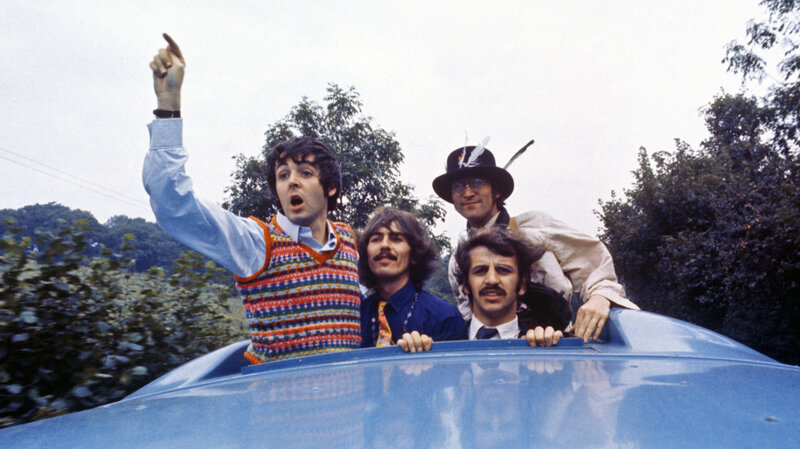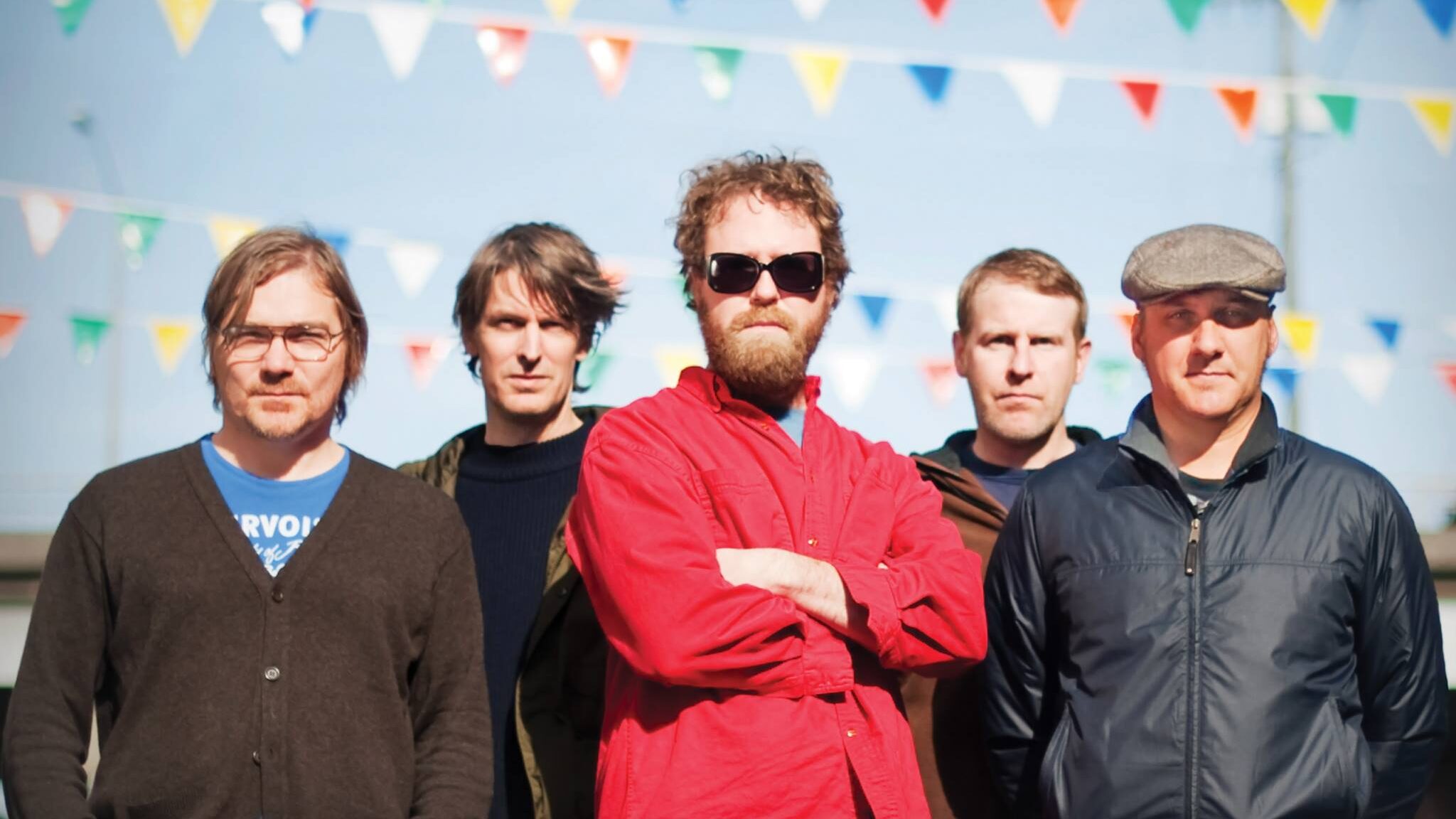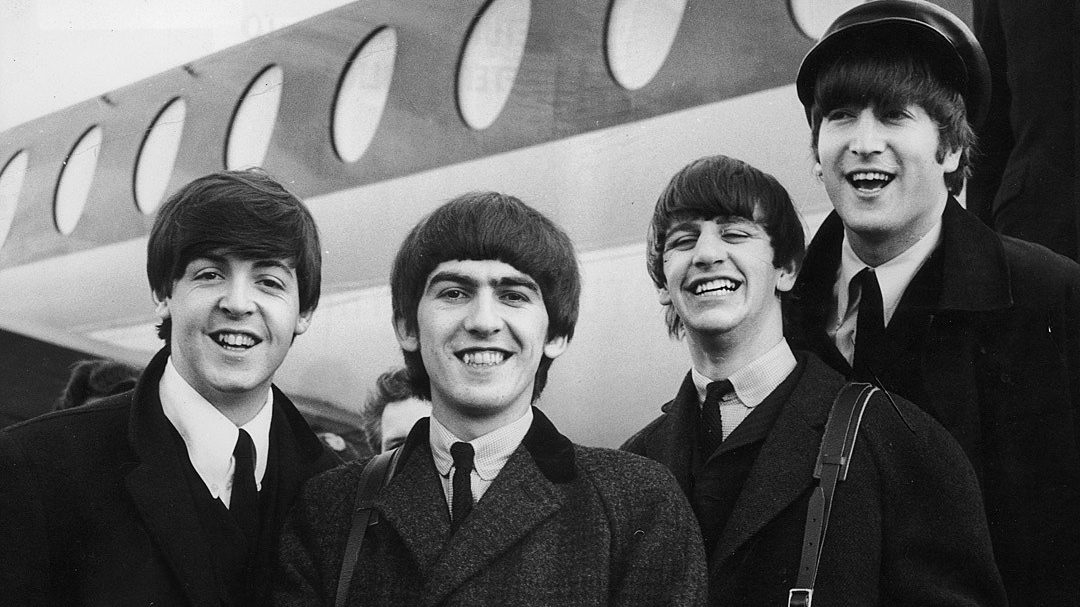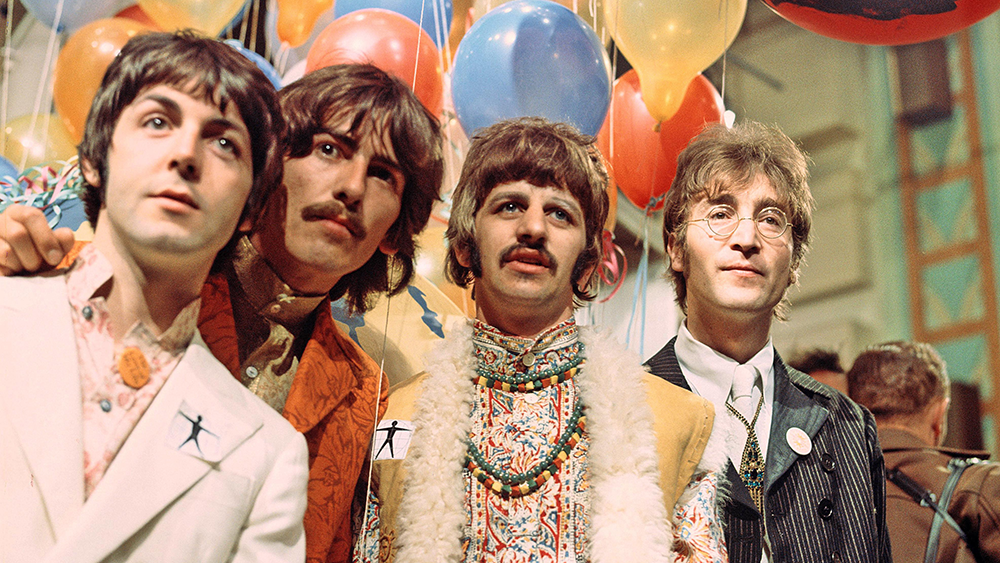
The centerpiece to Strange Currencies’ month-long celebration of The Beatles is this feature; our first collaborative staff list. As someone who has spent a lot of time making list-form projects, I know the work, strategy, and second-guessing that goes into such an endeavor. While the nature of a group list helps to divide some of the work load, the incorporation of multiple perspectives brings about its own set of challenges. Though I may bemoan my colleagues for the exclusion of some of my personal favorites – such as “Baby’s In Black,” “I Will,” “There’s a Place,” and “I’ll Be Back” – I think they absolve themselves with their thoughtful selections and commentary.
Our methodology was simple: each contributor had 100 picks; the top pick received 100 points, the 100th received 1. In the official canon of 213 songs – excluding alternate versions, German-language re-recordings, and George Martin’s instrumental tracks from Yellow Submarine, but including the “reunion” singles from the Anthology project – 161 songs earned at least one point between our seven participants. As the editor-in-chief of Strange Currencies, I reserved the right to break ties, though the final rankings vary (often greatly) from how I ordered them in the A Century of Song project.
The collaborators for this project range in age from the late-teens to early-forties; our individual level of enthusiasm for The Beatles ranges from “pretty serious fan” to “certified obsessive”; five of us are musicians, while two are merely music lovers. Here are our picks:
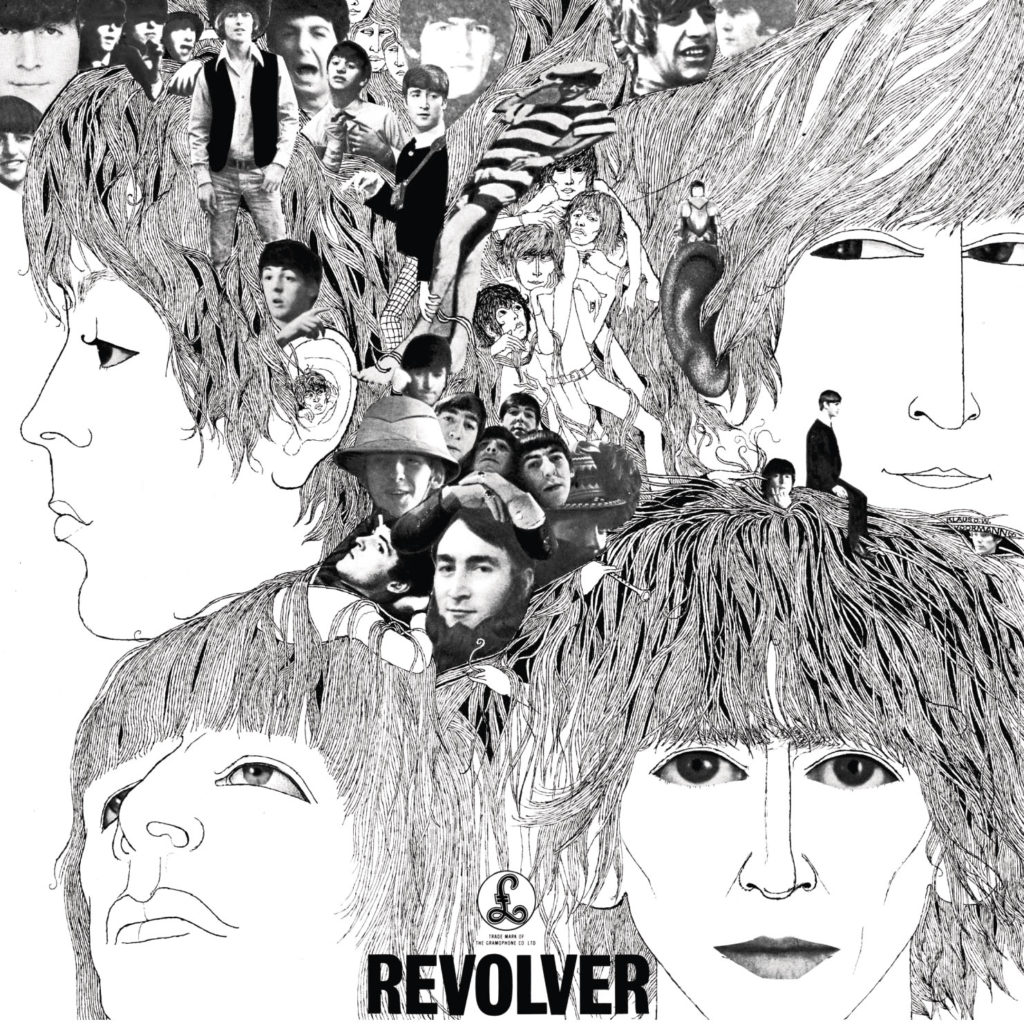
50. “She Said She Said”
from Revolver (1966)
315 points
The music to “She Said She Said” is fantastic: Ringo bashes the drums over George’s fuzzy, dreamy guitar and John’s organ – Paul McCartney did not play on the track. While the song is surely rooted in rock and roll purity, it is quite a unique sound as well. Like (nearly) every song on Revolver, the lyrics are just as compelling as the music. My understanding is that this is about an acid trip gone wrong, (Peter Fonda was involved). Lyrically, the listener is drawn in right from the start: “She said, ‘I know what it’s like to be dead, I know what it is to be sad.'” Coming after “Yellow Submarine,” it’s a great diversion from that campy kid song. — NB
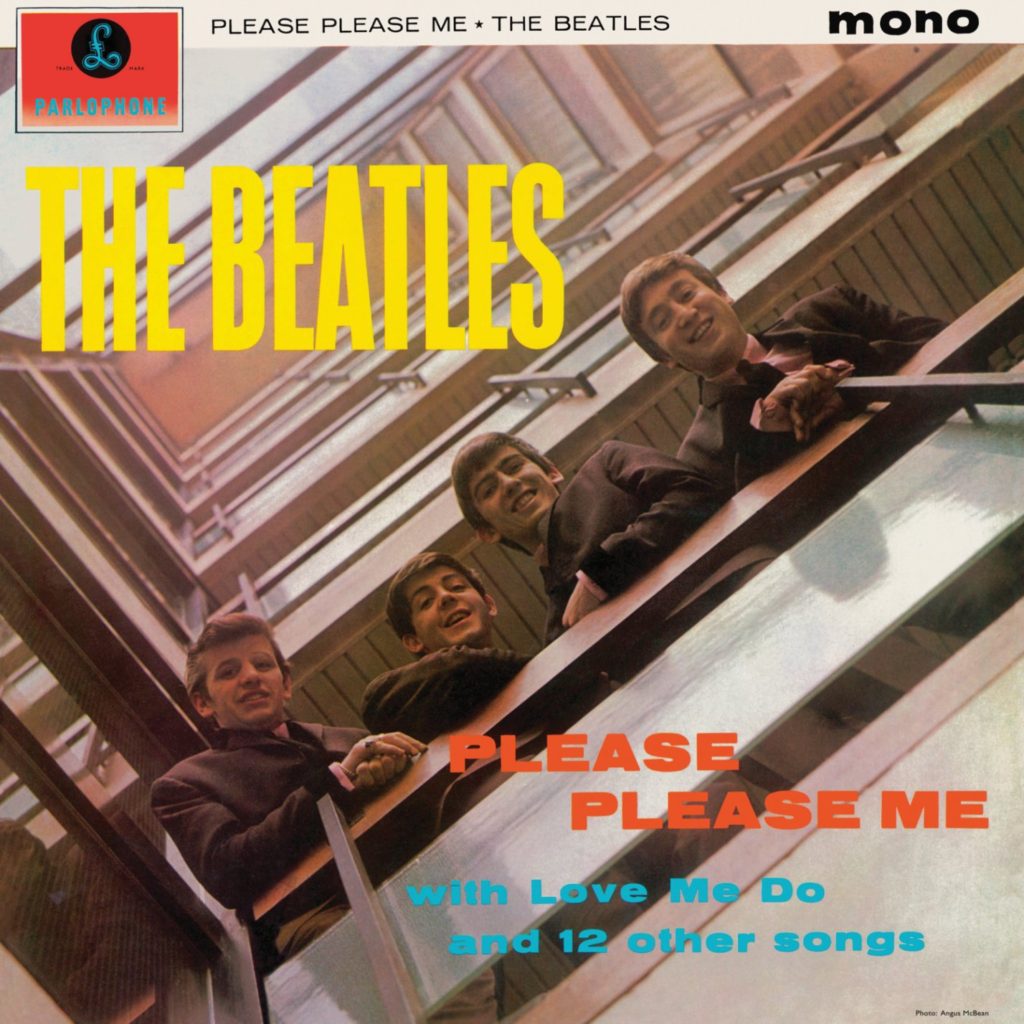
49. “I Saw Her Standing There”
from Please Please Me (1963)
320 points
“Huh one, two, three, faw!” And with that, The Beatles’ recorded legacy begins. This stomping number owes its bass line to Chuck Berry and its attitude to Little Richard, but the delivery – those harmonized “Whoo!’s” and the guitar solo that’s as much country & western as it is rock and roll – makes it clear that there was something more than mere imitation of their American idols going on here. This was an early John and Paul number – written together while they may not have been as old as seventeen – while slagging off school at Paul’s row house and disregarding lyrical suggestions form Paul’s father in the next room; “You know what I mean” will always be better than “Never been a beauty queen.” If you don’t know why, go spend some quality time with the album that used that line to open with. — MM
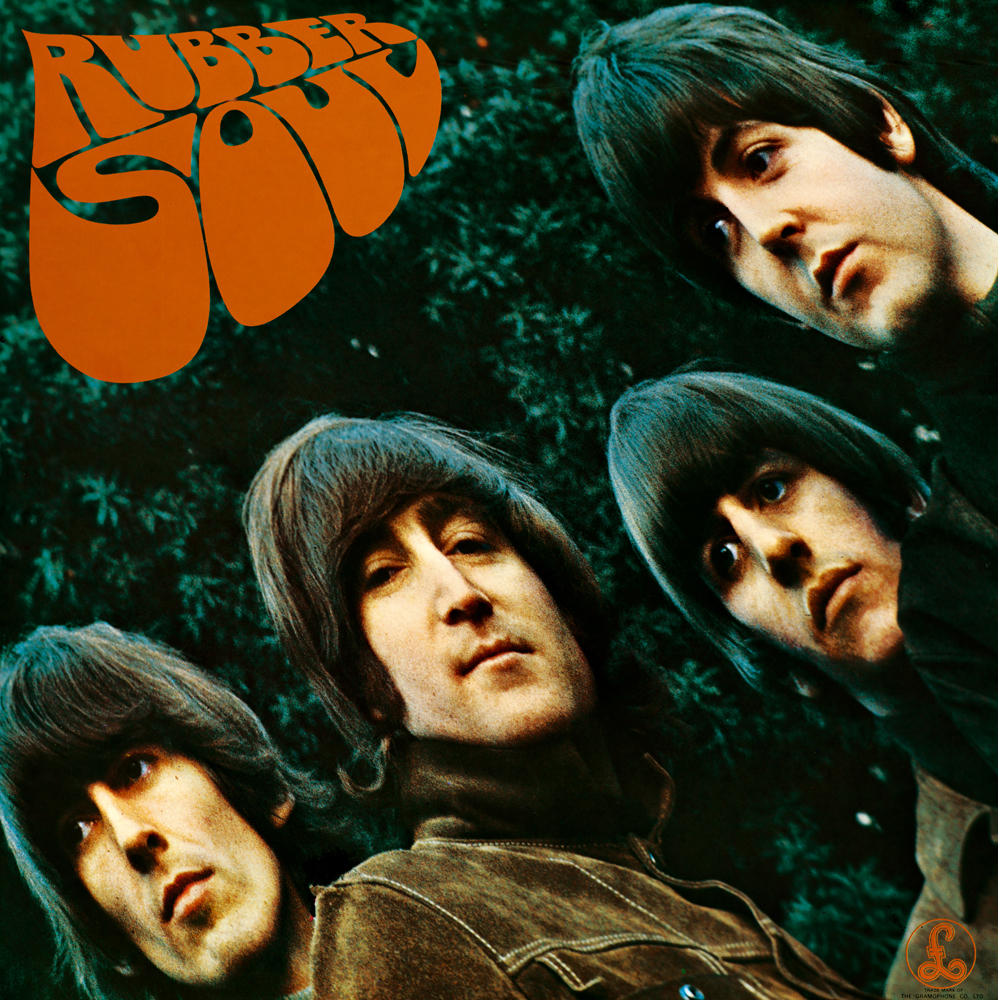
48. “I’m Looking Through You”
from Rubber Soul (1965)
324 points
“I’m Looking Through You” had the potential of becoming a poorly rushed song to make it in time for Rubber Soul’s release. Throughout, stray guitar notes, microphone feedback, and a dropped tambourine can all be heard. But Paul’s soulful performance carries the song to a higher level. The lyrics are bitter, of a man grappling with a failed relationship, following from the band’s expansion into more mature themes. McCartney delivers with a great amount of pain, giving the track a bite that is consistent with the lyrical content of Rubber Soul, and ultimately, it arguably benefits from being practically thrown together. The original takes of the track are interesting, but come across as dull in being slightly more polished. The new takes of the faster track are raw in tone, giving the lyrics a greater impact. McCartney’s effort results in an incredibly cohesive addition to Rubber Soul that never fails to give goosebumps. — KC
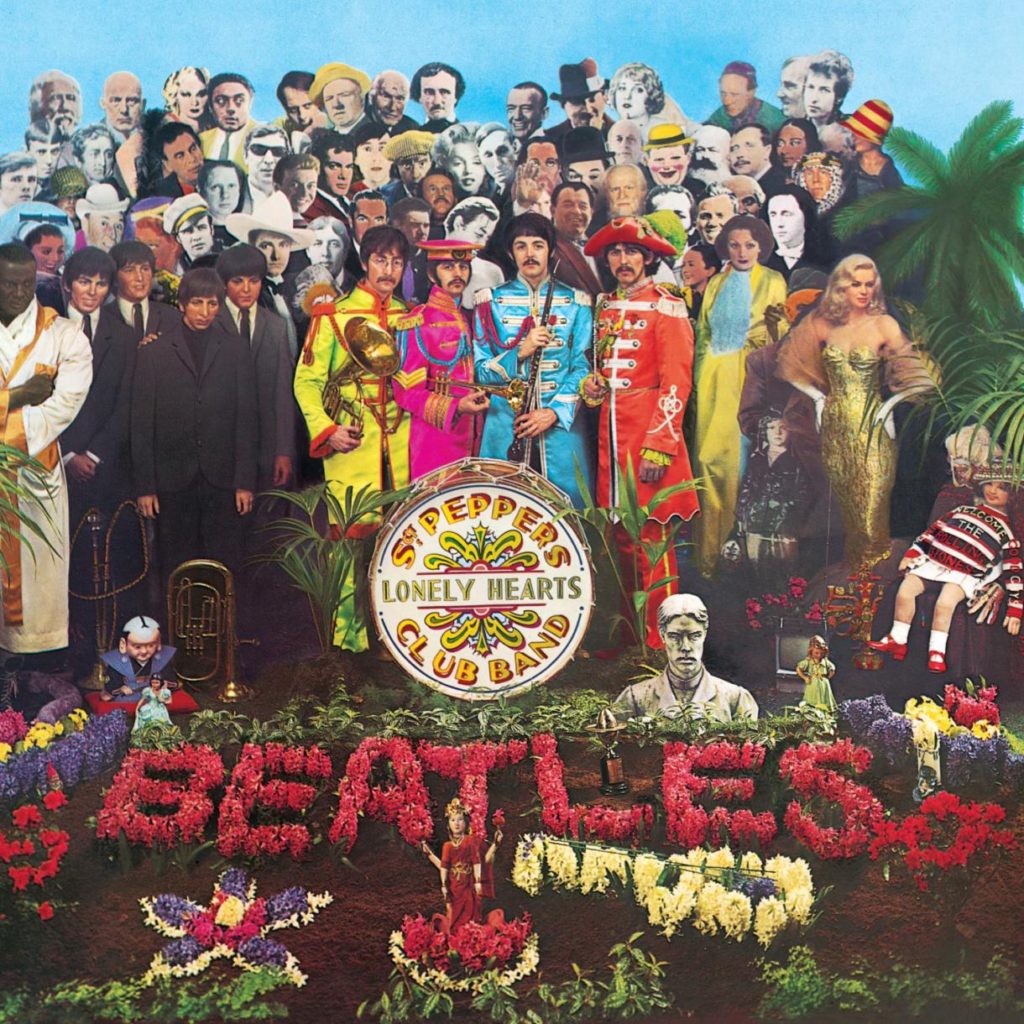
47. “With a Little Help From My Friends”
from Sgt. Pepper’s Lonely Hearts Club Band (1967)
327 points
During the spring/summer of 2008, I became familiar – and then briefly obsessed – with the Purple Chick “deluxe” bootleg versions of Beatles albums. While I initially viewed these unauthorized releases as a treasure trove, they quickly became a bit overwhelming – and their enhanced sound quality became less necessary upon the 2009 official release of the group’s entire remastered catalog. Aside from the 1968 “Esher Demos” – which have similarly since become redundant upon the release of the 2018 expanded “White Album” sets – the isolated instrumental and vocal mixes from Sgt. Pepper are the only thing that I ever found myself returning to much. Among those, I’ve always had a particular fondness for the deconstructed mixes of “With a Little Help From My Friends.” The instrumental mix identifies the track as (perhaps) the most Pet Sounds-influenced recording in The Beatles’ catalog, and the isolated vocals reveal the charming vulnerability of Ringo’s lead, and the thematically-fitting harmonies of the rest of the group. — MR

46. “I’m Only Sleeping”
from Revolver (1966)
350 points
After almost a decade of nonstop concerts, recording sessions, and press conferences, The Beatles were physically burnt out, yet in mid-1966, they were at their creative peak. These two competing factors come to a head on John’s first Revolver offering, where lyrics depict the daily habits of the “laziest person in England,” while technical achievements – like the backwards guitar solo – shine a light on the advancements being pushed by the band. — RG

45. “Within You Without You”
from Sgt. Pepper’s Lonely Hearts Club Band (1967)
352 points
Man…this song blew me away the first time I heard it. I had already fallen for Harrison’s flirtations with Indian music through “Love You To” on Revolver. These lines in the middle of “Within You Without You” come before a ruminative instrumental breakdown:
Try to realize it’s all within yourself
No one else can make you change
And to see you’re really only very small
And life flows on within you and without you
The idea of being rather a small, unimportant part of a massive system of interconnected living things instantly struck a deep chord ‘within’ me during college, and it still does to this day. It is transportive! — NB

44. “She’s Leaving Home”
from Sgt. Pepper’s Lonely Hearts Club Band (1967)
356 points
This song resonated deeply with me when I was young. Perhaps because I so longed to make a break for it, from the city I lived in, and my family too. But, also the music is beautiful with the violins and cellos. I love the structure of the chorus too – the back-and-forth between parents and child. It grabbed me as a disaffected youth and still reverberates. In fact, I write this as a parent now, and it feels equally powerful today, despite my view from the opposite perspective. — NB
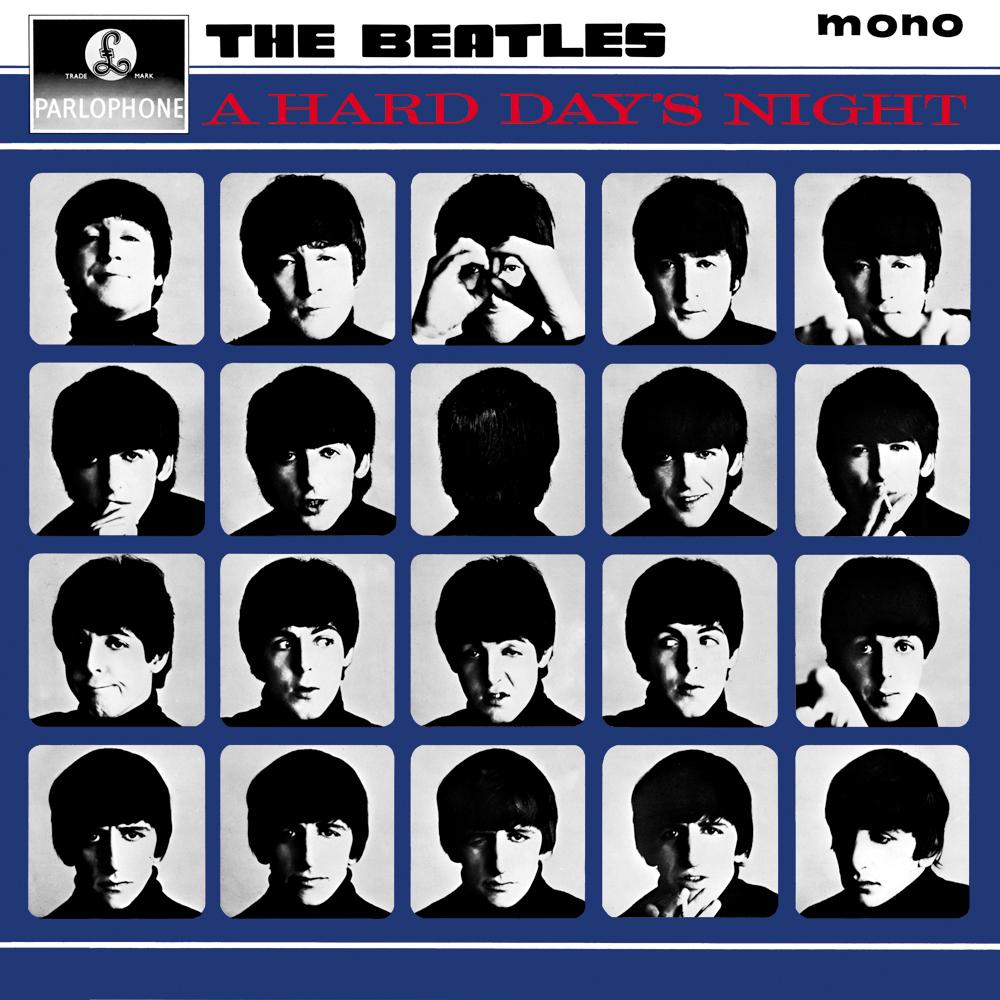
43. “And I Love Her”
from A Hard Day’s Night (1964)
356 points
“And I Love Her” is not only one of The Beatles’ best, but arguably one of the most perfect love songs ever written. The song carries with it a beautiful starkness that captures the innocence of young love with sensitivity. McCartney’s chord changes are simple, yet powerfully evocative as they resolve at the end of each verse. Paul’s use of minor chords for a happy love song is a great trick that adds dimensionality and emotion to the track. The backing band provides a Latin feel with Ringo making use of external percussion and John providing rhythm guitar. George’s subtle addition to the track is the key to tying it all together. The famous descending lead was a last minute addition that completes the song. Credit to George’s contribution is given by Paul in several interviews. Though it is primarily a “Paul” song, the band’s additions make the track sing. Ever since I saw A Hard Day’s Night as a kid, I’ve carried this track with me throughout my life. Calling the song perfect doesn’t do “And I Love Her” justice. — KC

42. “Here, There and Everywhere”
from Revolver (1966)
358 points
Much has been said about Paul’s innate ability as a songwriter to shine light on the positive aspects of a love song, yet something about “Here, There and Everywhere” shows a melancholic side of Paul that we rarely see. Maybe it’s the themes of Revolver that bring out some of the more ambiguous meanings to otherwise straightforward lines; maybe it’s the brilliant sample of it used in Frank Ocean’s “White Ferrari”; either way it shines as one of the best McCartney ballads. — RG

41. “Please Please Me”
from Please Please Me (1963)
364 points
Hamburg girls in the early 1960’s apparently did things that their Liverpool counterparts were less willing to do. John originally imagined this as a Roy Orbison-style tune – with that lilting crescendo of a chorus, “Please, pleeeEAAAAse me, oh yeah.” – except Roy never sang about that, and The Beatles’ arrangement was just too rocking for Roy. Listen to Ringo’s furious drum fills as the others provide a response to each vocal line. It’s exhilarating, racy, and instantly singable. George’s intro and fills give the song a melodic counterpoint that lifts it above anything Roy could have recorded. “Love Me Do” was the first single, but “Please, Please Me” is the real birth of The Beatles sound. — MM
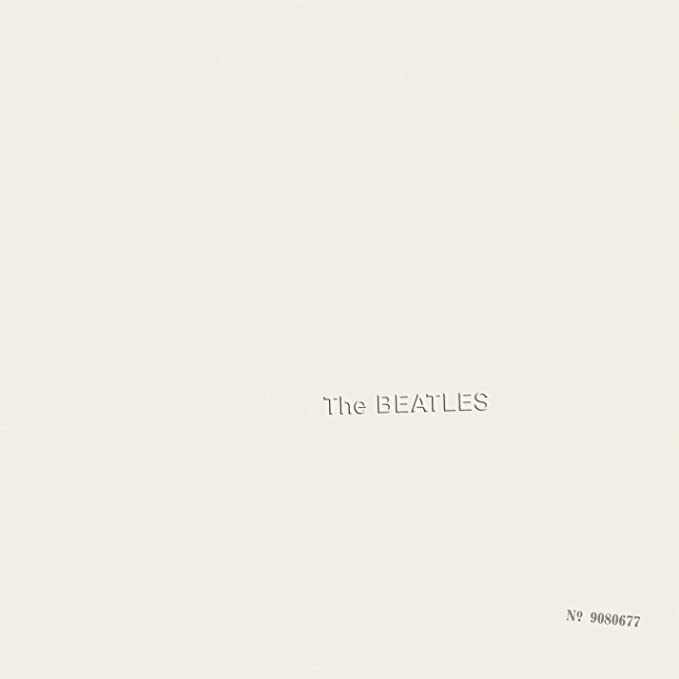
40. “Helter Skelter”
from The Beatles (1968)
369 points
Count me among the many fans of the recent remixes of The Beatles’ late-career albums: Sgt. Pepper, the “White Album,” and Abbey Road. While they have retained the spirit of the group’s original vision, each has provided long-time fans with an opportunity to approach these albums with somewhat-fresh ears. Of the three, it was the 2018 reissue of The Beatles that – for me, at least – provided the most intriguing listening experience. The song that benefitted more than any other – again, for me – was “Helter Skelter.” The surging intensity of the instrumentation reaches a new level in the updated mix, and it’s the backing vocals by John and George that most dramatically evoke the hellish landscape that Paul had envisioned for the track – note particularly their frenetic “YEEAAAAAHHH” that hits at the 1:55 mark. — MR
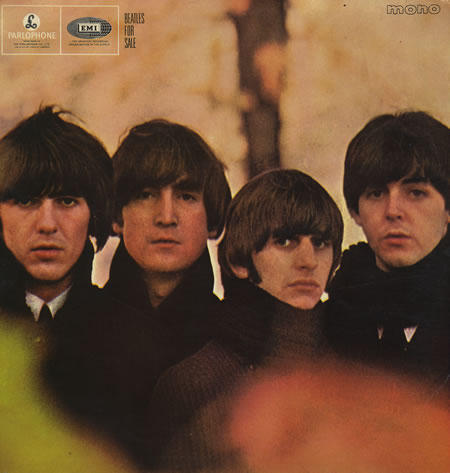
39. “Eight Days a Week”
from Beatles for Sale (1965)
370 points
It’s easy to overlook this classic when it’s up against “I Want to Hold Your Hand,” “All My Loving,” and “A Hard Day’s Night.” Innovative in its own right – the fade in, for instance, was largely unused to this point and briefly ubiquitous thereafter – “Eight Days a Week” is no slouch. The Beatles changed when they left the road and focused on the studio, becoming more introspective and experimental. This may be one of the last best examples of that early, touring phase, sound. — GB

38. “Blackbird”
from The Beatles (1968)
377 points
Regardless of your take on “Epistle to Dippy,” the world owes a great debt to English folkie Donovan, who taught Paul and John travis-style finger picking in India: where they proceeded to write in that style, respectively, “Blackbird,” “Mother Nature’s Son,” “Julia,” and “Child of Nature” – later reworked into “Jealous Guy.” Paul says this was written – at least in part – as a response to the struggle for civil rights going on across the pond. It couldn’t have been timelier, as it followed close on the heels of Martin Luther King Jr.’s assassination and nationwide riots and demonstrations. “Blackbird” is Paul McCartney’s genius at its best, with words and melody all combining perfectly, expressing an idea with emotion and beauty the way only a truly-great song can. The way the bass notes and higher register tendril around each other is almost baroque in nature. This song is as essential to the “White Album” as it is to McCartney’s legacy. — MM

37. “Girl”
from Rubber Soul (1965)
398 points
From the hypnotic backing chords to Lennon’s lackadaisical vocals, The Beatles’ “Girl” haunts the listener with precision that is markedly one of the group’s best tracks. As much as it is a baroque pop ballad, “Girl”’s roots also come from 1950s country & western standards that the group grew up with. Tracks like “Lonesome Town” by Ricky Nelson or “Walking After Midnight” by Patsy Cline evoke a similarly eerie feeling that must have influenced Lennon’s composition. It would be foolish not to note John’s lyrical contributions to the second bridge that solidify the song as a pop masterpiece. Lennon sings, “Was she told when she was young that pain would lead to pleasure?” highlighting sexual and capitalistic falsehoods that his culture was taught to put their faith in. In John’s last “fully present” Beatles album, “Girl” marks a career high note that the world is still catching up to. — KC
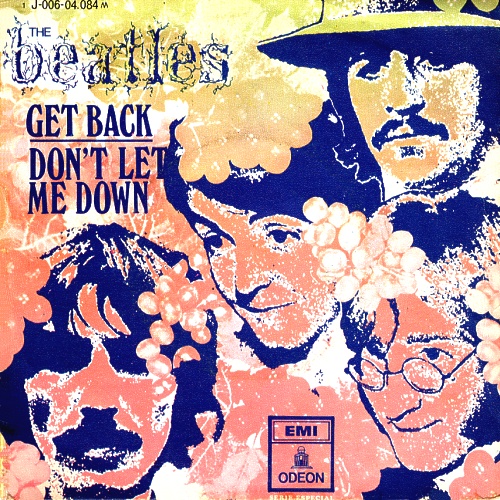
36. “Don’t Let Me Down”
single B-side (1969)
403 points
One of the standout songs from the notorious “Get Back” sessions, “Don’t Let Me Down” serves as a tamer look into the romance between John and Yoko Ono than the one that we get in songs like “Happiness is a Warm Gun” and “I Want You (She’s so Heavy).” Yet, a fantastic Lennon vocal performance – as well as Billy Preston’s organ solo in the middle third – paint a picture of Lennon’s vulnerability during the marriage that we rarely get to see in his Beatles career. — RG
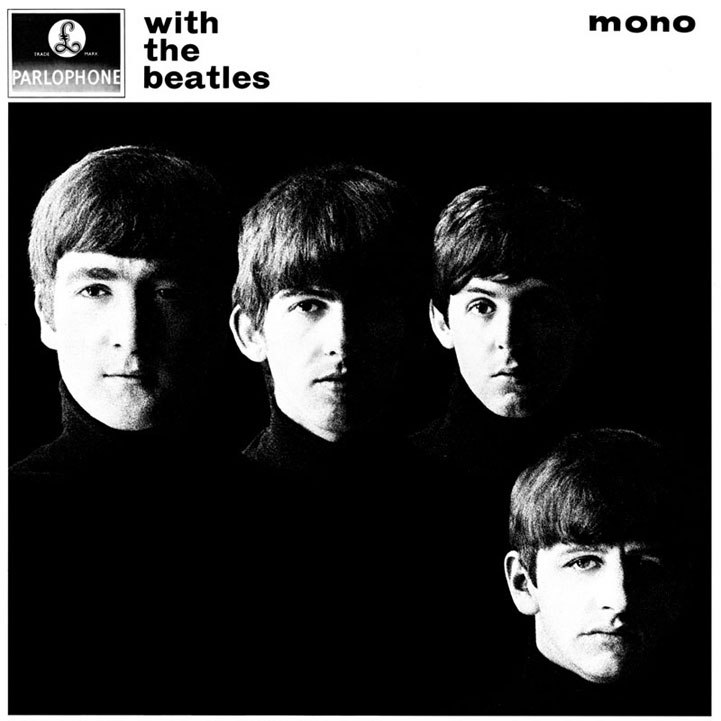
35. “All My Loving”
from With the Beatles (1963)
414 points
While on tour in 1963 with Roy Orbison, Paul penned the lyrics to this tune that has some hints of country & western influence. This is one of the first compositions of Paul’s, and one of the only songs in which he began with the lyrics and later added the music. The finished product ends up sounding somewhat informed by Orbison’s brand of country-infused rock and roll. The triplet rhythm guitars give the tune a shuffling movement that shows the burgeoning musical exploration that the world would soon come to expect from the Fab Four. — GK

34. “Can’t Buy Me Love”
from A Hard Day’s Night (1964)
415 points
I think I’ve finally come to terms with the fact that I was introduced to this Beatles song by way of the 1987 Patrick Dempsey film of the same name. To date, that hasn’t done irreparable harm to the song for me. In fact, maybe there’s some nostalgia there that gave the song an additional boost. Regardless, it’s hard to deny this hit amongst the treasures of A Hard Day’s Night that fueled the all-consuming Beatlemania of 1964. And in case you were wondering, no, Paul did not intend this song to be about prostitution, so ignore Dempsey’s cringey attempt to solicit the high school cheerleader. — GK

33. “Dear Prudence”
from The Beatles (1968)
417 points
If I’m forced to pick a favorite Beatles song, this one is usually the prime contender. I recognize that it’s not their greatest sonic masterpiece, but it just scratches an itch nothing else gets to. Why? Maybe it’s the trancelike repetition of that D and F#, ringing out over and over with Paul’s irresistible bass groove and funky, loose drum fills. Maybe it’s the earnestness in John’s voice, trying to coax Mia Farrow’s batty sister out of her meditation hut in India, or George’s ever accelerating and soaring guitar leads. Most likely it’s all of those things. Sorry Ringo, but I’m glad you didn’t show up that day. — MM
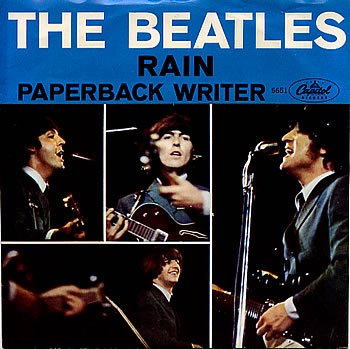
32. “Paperback Writer”
single A-side (1966)
431 points
Paul writes two types of songs: relationship based, and everything else. The relationship ones are generally pretty good. And the others? Sometimes you get “Paperback Writer,” and sometimes you get “Ebony and Ivory.” In other words: sometimes great, sometimes schmaltz. The other Beatles keep him in check here, keeping us from getting too far into Wings-wilderness territory. The result is a catchy, poppy, number one smash hit about a manuscript cover letter. — GB
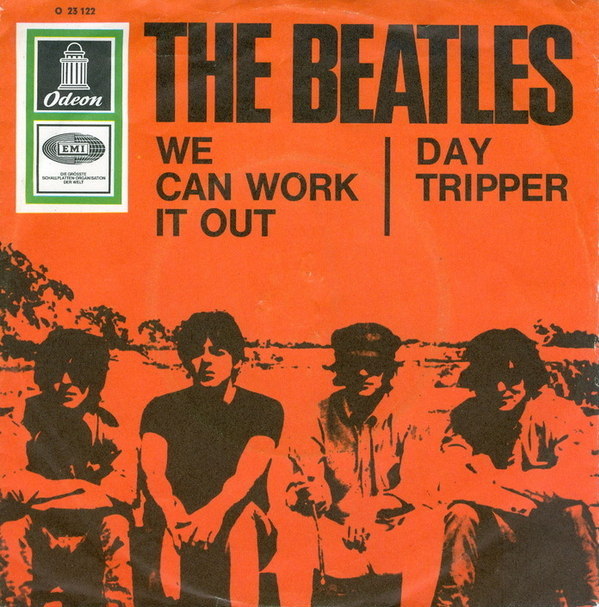
31. “Day Tripper”
single B-side (1965)
435 points
The “Day Tripper” guitar riff is a classic must-learn for all young guitarists. Lennon had a knack for coming up with catchy hooks, and – all drug references aside – this one will get you addicted. And that rave up in the middle of the song is fantastic. Raves, hooky addictions… I’m sensing a theme here. — GK
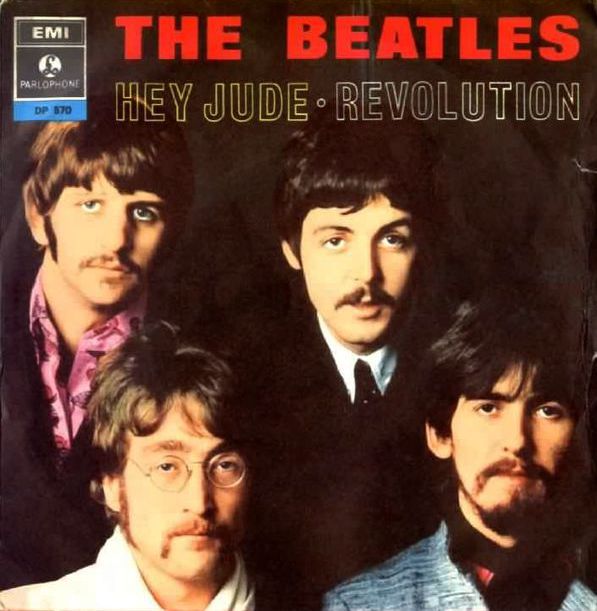
30. “Revolution”
single B-side (1968)
440 points
The Beatles didn’t write a lot of protest songs. “The Fool on the Hill” and “All You Need is Love” touch on the war in Vietnam. Neither have a punch, feeling more like commentary that objection. “Piggies” channels Orwell, but is a little too goofy to work. What those lack, “Revolution” makes up for with an attention-grabbing opening ten seconds. John, along with the others, largely kept his political views silent until his solo career. “Revolution” straddles a few fences, and may not be as powerful as “Happy Christmas (War is Over),” but it for a band without a clear voice in the protest sixties, it is a worthy effort. — GB

29. “Rain”
single B-side (1966)
444 points
“Rain” isn’t the highest-rated song on this list, nor is it the highest-rated song on my personal list, but it is purely the most Beatle song there is. It’s the perfect melodic pop song with just the right amount of experimentation. Every member is perfectly represented. Lennon’s lyrics and vocal lead, McCartney’s melodic bass line, Harrison’s winding lead guitar, and Starr’s best drumming performance combine to showcase everything that made The Beatles so great. — RG

28. “Happiness is a Warm Gun”
from The Beatles (1968)
453 points
It’s 1968, and we’re a long ways away from Ed Sullivan. Four years earlier, John Lennon had sent American teenagers into a frenzy with the wholesome-enough “I Want to Hold Your Hand.” Now, in a melange of twisted imagery, sexual innuendo, and heroin-fueled nightmaria, Lennon defined happiness in language that felt disturbingly in-line with the violence that seemed omnipresent in contemporary society. The transformative journey from ‘point A’ to ‘point B’ – over a span of such a short amount of time – remains utterly mind-boggling. — MR

27. “We Can Work It Out”
single A-side (1965)
457 points
As it turns out, ranking 100 songs means that at least one of them is going to be quite a bit lower than they probably should be, and this track is the one that stood out to me as a little bit too low on my personal list. One of the best examples of the Lennon/McCartney partnership working to its fullest extent, this Paul-led single is carried by the contrast between the McCartney lead verse and the Lennon lead bridge. Not to mention the prominent harmonium sound, and the nice time change from a standard 4/4 to a 3/4 waltz, which serve as some of the more unique elements that really make the track stand out. — RG
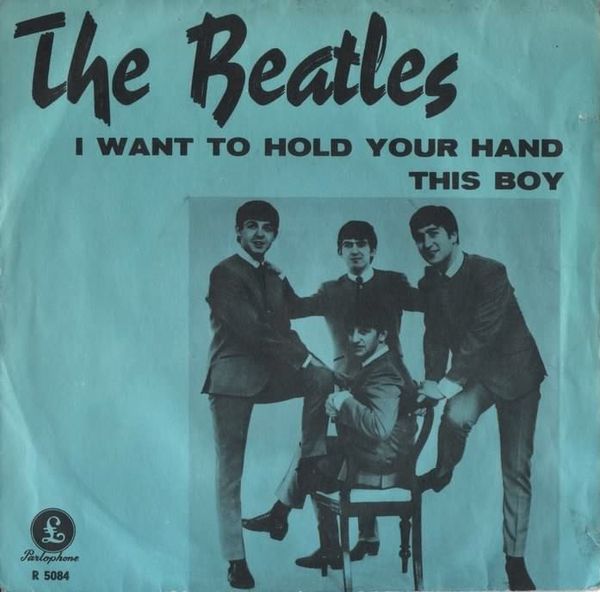
26. “I Want to Hold Your Hand”
single A-side (1963)
465 points
Of the three songs that live in the collective memory of Beatlemania, “I Want to Hold Your Hand” was the most successful and accessible. “She Loves You” and “All My Loving” laid the ground work for “I Want to Hold Your Hand”’s radio success, and the lyrics are just tame enough for parents to approve. It was the Beatles first U.S. number one, and also their first foray into four-track recording – making for, perhaps, the longer legacy. — GB


